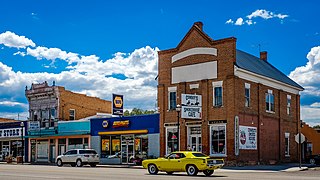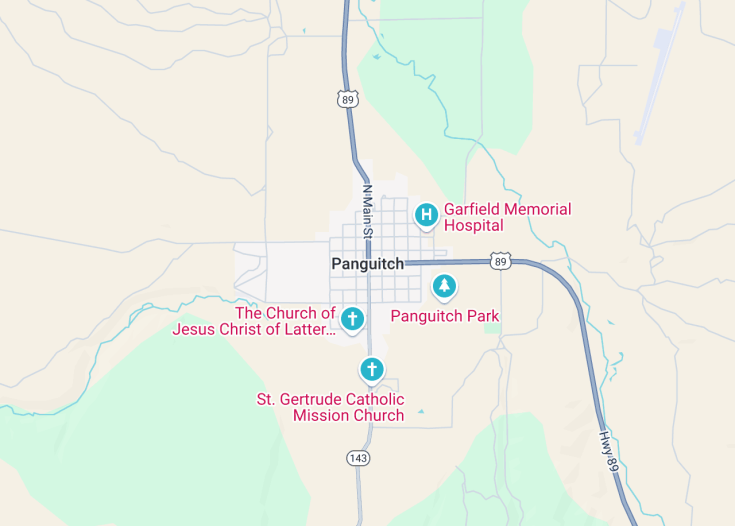Nestled within the scenic bounds of southern Utah, Panguitch charms visitors with its enchanting rural beauty and rich historical tapestry. This small town, whose name derives from the Paiute word for “big fish,” offers a gateway to some of Utah’s most spectacular natural landscapes, including Bryce Canyon National Park and Zion National Park. Beyond natural wonders, Panguitch boasts a historic downtown featuring beautifully restored, colorful wooden buildings from its late 19th-century heyday, offering a picturesque glimpse into the Old West.
For an authentic experience, visit during the Panguitch Quilt Walk Festival, which celebrates local history and craftsmanship through vibrant displays and demonstrations.
Consider scheduling your trip in early summer to enjoy the town’s annual Balloon Festival, where the sky is dotted with colorful hot air balloons against a backdrop of stunning natural landscapes.
Top things to do & see in Panguitch
Select the following sights and activities to discover best tickets and tours available in Panguitch.
Panguitch: A Gateway to Natural Splendor
| Country | USA |
| Time in Panguitch | GMT-7 |
| Language spoken | English |
| Population | 1,623 (U.S. Census Bureau, 2020) |
| Currency | US Dollar (USD $) |
| Airports |
|
Nestled in the high plateau country of southwestern Utah, Panguitch serves not only as a historic town but also as a springboard to some of the nation’s most stunning natural landscapes. Incorporated in 1899 and derived from the local Paiute language meaning ‘Big Fish,’ Panguitch is steeped in a rich history tied closely to the pioneer era and early settlements of the American West.
Today, Panguitch captivates visitors with its beautifully preserved Main Street lined with colorful, late-19th-century buildings, hosting a variety of local shops and eateries. Beyond its architectural charm, Panguitch is an ideal base camp for outdoor enthusiasts. It lies just a short drive from Bryce Canyon National Park, known for its distinctive spire-shaped rock formations called hoodoos, and close to other natural attractions like Zion National Park and Capitol Reef National Park.
The town is also famed for its annual Panguitch Balloon Rally, which draws ballooning enthusiasts from across the country every June. Drifting against a backdrop of vivid blue skies and the red rock landscape, the event encapsulates the spirit of adventure that is synonymous with the American Southwest.
Despite its modest size, Panguitch plays a significant role in the cultural and economic spheres of Garfield County, contributing to the preservation of local heritage while embracing the opportunities of tourism. Its proximity to some of the most visited national parks in the United States makes it a perpetually appealing destination for those seeking to explore the grandeur of Utah’s natural world.
Where is Panguitch?
Panguitch, Utah is strategically positioned in the heart of the scenic southwest’s canyon country, surrounded by several national parks and monuments.
Distances:
| Route | Distance by car | Time by car |
|---|---|---|
| Panguitch to Salt Lake City | 246 miles | 3 hours 50 mins |
| Panguitch to Las Vegas | 238 miles | 3 hours 30 mins |
| Panguitch to Moab | 275 miles | 4 hours 20 mins |
What is Panguitch famous for?
Panguitch is known for its rich history, picturesque 19th-century architecture, and close proximity to several renowned national parks, including Bryce Canyon and Zion. Its annual balloon rally is a significant local event.
History
Before 1865: Native Lands
The region where Panguitch now lies was originally inhabited by Native American tribes, predominantly the Paiute people. These indigenous residents engaged primarily in fishing and hunting for their subsistence. Their profound connection to the land laid the foundation of the area’s rich cultural tapestry.
1865 – Late 1800s: Establishment and Early Challenges
Founded in March 1865 by a group of Mormon pioneers led by William Hood, Panguitch serves as a tangible relic of the western expansion of settlers in the United States. The pioneers named the town ‘Panguitch’, which means ‘big fish’ in the Paiute language, reflecting the area’s abundant fishing resources. Initially, survival in the harsh, cold climate was a challenge. This led to the famed “Quilt Walk”, where starving settlers trekked over snowbound mountains to obtain food supplies and returned, miraculously surviving while using quilts to avoid sinking into deep snow.
Late 1800s to Early 1900s: Development and Growth
Post-establishment, Panguitch began to thrive agriculturally, benefiting from its surrounding fertile lands. The town also saw the construction of several historic buildings during this period, many of which still stand today, adding charm and character to Panguitch. The introduction of the railroad and the advent of new agricultural technologies spurred further growth, transitioning the town into a modest yet pivotal hub for farming and trade.
Mid-1900s to Present day: Modernization and Preservation
The latter half of the 20th century marked a period of modernization yet a strong commitment to heritage preservation. Tourism began to flourish as visitors came to admire the enduring pioneer spirit, historic architecture, and the natural beauty of the surrounding landscapes. Today, Panguitch balances contemporary demands while honoring its rich, storied past, making it a unique historical gem in Utah.
Visit Panguitch
What to see and do in Panguitch, Utah (USA).
Visitors to Panguitch are greeted with a delightful array of sights and activities that honour both its natural and historical heritage. Explore the historic Panguitch Main Street with its charming collection of 19th-century buildings, offering insights into the town’s storied past. Nature enthusiasts can venture close to the nearby Bryce Canyon National Park and the Dixie National Forest for exceptional hiking, photography, and wildlife watching. For a local cultural experience, attend a live performance at the historic Gem Theatre, which continues to entertain guests as it did decades ago.
- Walk through Panguitch Historic District
- Explore nearby Bryce Canyon National Park
- Visit the Gem Theatre for live performances
- Go fishing or boating on Panguitch Lake
- Attend local quilting workshops or festivals
Annual Festivals and Events
Panguitch hosts several engaging events throughout the year that celebrate its culture and history. Noteworthy among them is the Panguitch Quilt Walk Festival, held in June, which commemorates the town’s founding legend with quilting demonstrations, pioneer re-enactments, and a parade. Balloon enthusiasts should not miss the Panguitch Valley Balloon Rally, a vibrant event in June that fills the sky with colorful hot air balloons. Each of these festivals offers a unique way to experience the local traditions and community spirit of Panguitch.
Best time to visit Panguitch
The ideal time to visit Panguitch is during the late spring to early fall, from May through September. This period provides pleasant weather, perfect for exploring the outdoor attractions and participating in the town’s vibrant events like the Quilt Walk Festival and Balloon Rally.
is Panguitch worth visiting?
Indeed, Panguitch is a place worth visiting, particularly for those who cherish history and nature. This serene town offers a peek into Utah’s pioneering past, beautiful historic architecture, and proximity to some of the most stunning natural landscapes in the United States, such as Bryce Canyon. Whether you are an outdoor adventurer, a history enthusiast, or a family looking for a peaceful retreat, Panguitch provides a enriching, culturally profound experience that is hard to match.










